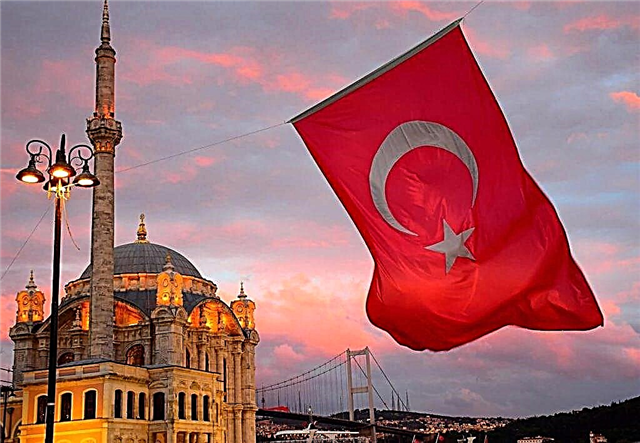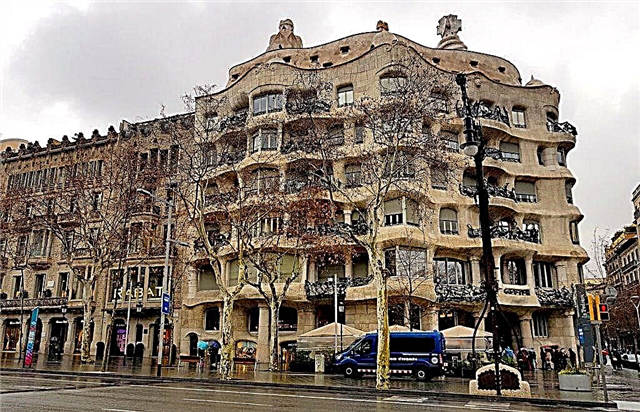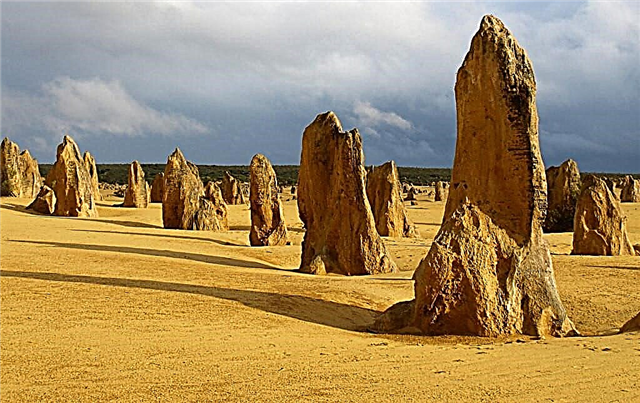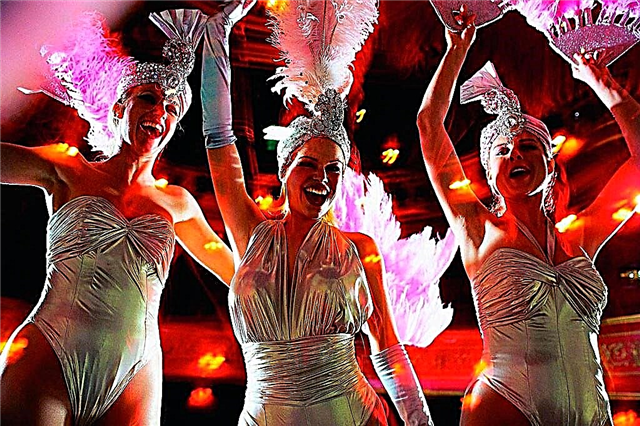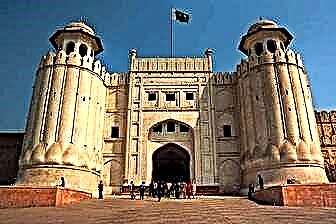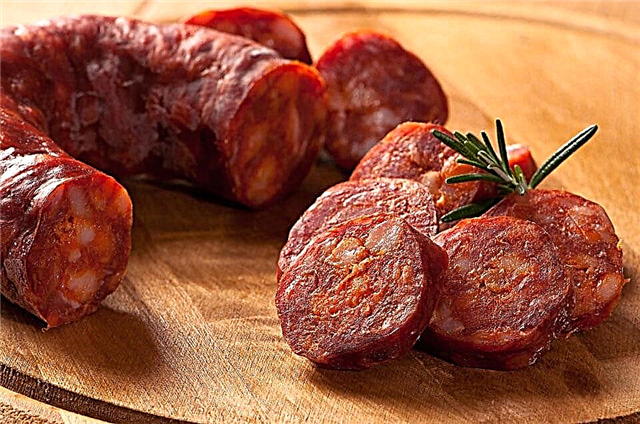Spain is a great place to spend your holidays or vacations. I would like to bring to memory not only a good mood and unique memories, but also something significant. Do not exchange for magnets of the same type and other souvenir trifles, it is better to buy a truly authentic gift. It will remind you of this hospitable country, its traditions and customs. Do not forget about presentations for loved ones, which will help them immerse themselves in a truly Spanish spirit. Once in the capital of Catalonia, it is no wonder to get confused, there are so many unusual and interesting around. In order not to wonder what to bring from Barcelona, take a look at our selection of great ideas.
Fuet

The Spaniards know a lot about delicious food. Meat delicacies will be a wonderful edible souvenir that conveys the national flavor. Pay attention to the famous Fuet sausage. This word is translated as "whip". Indeed, the raw smoked sausage, covered with a noble white mold, is quite dense, flexible, thin and light. Particularly attractive is its aroma, which is a bit reminiscent of mushroom. Fuet has a specific delicate, delicate and refined taste.
For cooking, use finely chopped pork, add lard, pepper and garlic. Then the minced meat is tightly placed in the small intestine, which is rubbed with salt. Fuet ripens for two months in limbo. The room should not be very humid. It is in these conditions that mold forms. When buying, pay attention - it should be dry to the touch.
If the mold is wet and slippery, it is better not to buy such a product. This sausage is perfect as an appetizer with dry red wine. It can be paired with cheese and tomatoes. It is customary to eat fuet directly with the mold, without peeling. In local restaurants, such a delicacy is served between main courses, for an aperitif, and is never used for sandwiches.
Jamon

This unique meat delicacy is considered a symbol of the country. If you are choosing the perfect gift for your loved ones, jamon is perfect. The name translates as "ham". This dish was known two thousand years ago. Historians believe that it was invented by the Romans. There is a version that jamon was included in the diet on Columbus's ship. What is the delicacy made of? Jamon is the raw hind legs of pigs. Everything is important here - both the breed of the animal and its nutrition throughout life.
The budget serrano jamon is made from white pigs that live in a barn and eat industrial feed. For the elite jamon Iberico, the meat of a special breed of black Iberian pigs is used. It has marble veins and a deep red color. Black pigs graze freely and feed on grass and acorns. Jamon is quite tough meat, so it is cut into thin slices. Usually served with red wine and complemented with olives.
Sometimes - on bread, which is pre-rubbed with olive oil. In any supermarket you can buy inexpensive types of this delicacy. But if you want to try it before buying, then you should visit the jamoneria. This is a kind of restaurant, the main dish of which is jamon. A famous establishment of this kind is Enrique Tomas (Carrer de Pelai, 18). Here you can buy both a small package and a large ham.
Chorizo

This king of sausage cuisine is known all over the world, it is produced in many countries, including Russia. But real chorizo can only be tasted in the Iberian Peninsula. Spicy pork sausage has been known since antiquity. One of the Spanish kings - Alfonso X the Wise - even issued a decree according to which in taverns everyone who ordered wine was served bread with a slice of chorizo.
This was the reason for the emergence of a local tradition of eating snacks called tapas. A special "smoky" taste is given to it by paprika, which is previously smoked on oak chips. Expressive taste and unique aroma - it is impossible to resist them. Chorizo is served with olives, feta cheese and dried tomatoes. Fried sausage can often be found. In addition, chorizo is included in a huge number of local dishes. Now there are many varieties of this delicacy.
Three of them are especially popular:
- Vela is a wide sausage made from coarsely ground minced meat.
- Sarta is a dry-cured, ripened variety. It is an excellent snack.
- Fresco - has the brightest aroma, but heat treatment is necessary when using it. Gives dishes a unique flavor and piquancy.
Wine

It is impossible not to taste the local wine. This country confidently holds first place in the area of vineyards in the world, and in terms of the amount of wine produced, it gives the palm only to France and Italy. The history of winemaking in the country has more than one millennium. Locals have created several classifications of wines.
The most basic of them divides drinks into the following categories:
- Table wine is the most popular variety. The vineyards are not classified, the grape variety and harvest year are not indicated on the label.
- Local Wine - Provides information on the variety and time of harvest, as well as the region where it was produced.
- Vintage wine - a producer is a specific area that has its own regulatory body.
- Branded higher - wine from the best regions. Now these are Rioja and Catalonia.
There are also four types of wine, depending on the aging period. Among the most famous drinks are Gramona Gessami, Jean Leon Petit Chardonnay, Agusti Torello Mata Rosado Trepat, Castell del Remei. When returning home, be sure to bring a bottle of wine. It will remind you of bright Spain, warm sun and wonderful nature.
Chocolate

Cocoa beans were first brought to Spain by the famous traveler Columbus. On the fourth expedition, he landed in Guyana and tasted a strange frothy drink. He liked the taste, and, returning to Spain, Columbus presented the royal couple with hitherto unknown fruits. Then they had not made the proper impression yet. A few years later, the conqueror Hernan Cortez, who went to America, was also impressed by the amazing new taste.
Cortez was accompanied on his campaigns by a certain monk who brought a sack of cocoa fruit to the abbot of the monastery, De Piedro. Residents were the first to figure out how to prepare a hot chocolate drink. Since then, chocolate has become a favorite treat in this country. Initially, it was the privilege of the nobility, but later other residents were able to appreciate it. The production of the world famous Valor chocolate dates back to 1881.
It was then that a small family business was organized in the town of Villajoyosa. Now it is the largest chocolate manufacturer in the country, which keeps all the secrets and traditions. But apart from preserving unique recipes, the Spaniards are no strangers to experimentation. For example, you can try vitamin-enriched green chocolate that contains seaweed.
Turron

Turron is another delicious souvenir from the Iberian Peninsula. This delicacy is also known as Spanish halva. It is made from almonds, honey, sugar and egg white. Sometimes popcorn, chocolate and fruit are added, this variety is a must-have dessert on the Christmas table. The inhabitants have a beautiful legend about the origin of the Turron.
One of the kings married a Scandinavian princess. She longed for her native snowy landscapes, and her husband ordered to grow almond trees throughout the kingdom. Blooming almonds reminded the queen of snowy Scandinavia, and the Spaniards learned to use the huge harvest of almonds to make a wonderful dessert. In fact, everything is much more prosaic. Turron's recipe was adopted from the Arabs, who once ruled the territory of the Iberian Peninsula.
This authentic turron is made in the small town of Gijona. The delicacy produced there has a certificate of authenticity. And from this city the turron disperses throughout the country. Be sure to go to the pastry shop and purchase this dessert. Its unique taste will never be forgotten.
Carquignolis cookies

This cookie is another gourmet discovery. Most of all, it resembles crackers. Carquignolis is prepared from flour, sugar and eggs, almonds are a must. The cookies are elongated and dry enough. This form is needed so that it is convenient to dip it into the drink. It can be consumed with tea or coffee.
Another option is with sweet wine. Most often, carquignolis is served for breakfast or afternoon tea. It can be purchased, for example, at La Colmena (Plaza de l'Angel, 12) or Triomf, at Rambla del Poblenou, 41.
Cheese

Your acquaintance with the local cuisine will be incomplete if you do not try the famous local cheeses for which this country is famous. There are hundreds of names of this product, and it is not easy to decide which cheese to bring. Approximately 20 varieties have a certificate of origin. For production, goat, sheep or cow milk is used. Cheeses vary in maturity, from one week to at least a year. They can be aged in oil or wine, spices and truffles can be added.
One of the most famous varieties is Manchego. It is even mentioned by Cervantes, and this product is produced in the homeland of Don Quixote. Ripening period - up to one year.
Tetilla is a semi-hard cheese with a delicate herbaceous lemon flavor. It is interesting with its unusual shape in the form of a cone. It is usually served with fruit and young wine.
Cabrales is a soft cream cheese that matures in limestone caves. Their microclimate helps the formation of white noble mold. The heads are usually pierced with special rods so that the mold can penetrate inside.
Sauce

The Spaniards can choose the appropriate sauce for any dish, which will emphasize the amazing and unique taste. You can surprise your loved ones by bringing home this aromatic and savory local product. The most emblematic is the aioli sauce. The name translates as “butter and garlic,” but eggs, some fruits and mustard are also added. It goes well with grilled meat, seafood and fish dishes.
The locals love to add Romesco sauce made from tomatoes, olive oil, nuts and garlic to white meat, vegetable and fish dishes. Tomatoes are not boiled for him, but baked on a baking sheet. Hot sauce brava is a popular condiment made from chili peppers, tomatoes, olive oil and vinegar. Garum sauce can rightfully be called the oldest, because it was used by the ancient Romans. For cooking, take small fish, vinegar, honey, soy sauce, spices and olives.
Spice

Lovers of herbs and spices will love the diversity in Spain. The most pleasant thing is to buy them in open markets, where a peculiar aroma envelops everyone. Chili, for which the Spaniards are grateful to Columbus, is added to many local dishes. It can be found in stews, sauces, and sausages.
Saffron has always been a truly precious spice. This plant is found in Spain, but only the stamens are used for culinary purposes. For the production of one kilogram of saffron, 85 thousand flowers are processed. It is most often used in paella, which, thanks to this spice, acquires a beautiful yellowish color and exquisite aroma.
Paprika is a rounded sweet pepper. The Spaniards love spicy food, but paprika is often added in large quantities to different dishes. Spicy herbs are also very popular. Fennel, coriander, parsley, cilantro give a delicate aroma and unique taste.
Tea

Be prepared to be surprised by the local tea. The Spaniards do not often drink the drink we are used to. Usually they set off its taste with a variety of additives - mint, bergamot and even olive leaves. Most of all, the locals love herbal drinks. Mint, chamomile, linden, thyme, hibiscus, cornflower, verbena are used.
Local tea drinking traditions are very similar to Moroccan ones, because it was the Arabs who introduced this drink to the Spaniards. You can find special establishments - tetteria. These are kind of tea houses. Green tea is especially popular. For a souvenir at home, premium tea is well suited, which is distinguished by its delicate taste and bright festive packaging.
Coffee
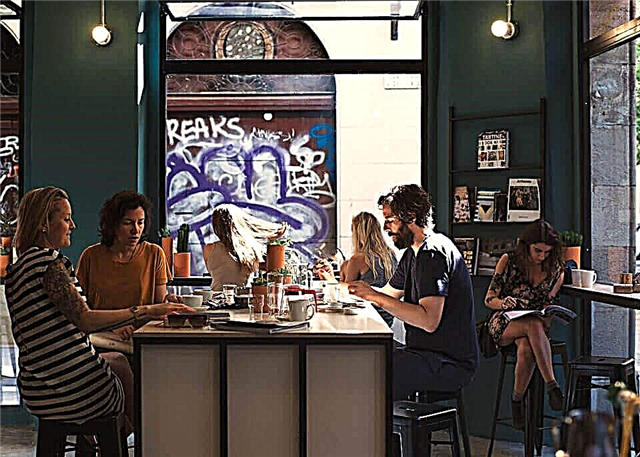
The coffee culture of this amazing country is a symbol of enjoyment of life, energy and unpredictability. Hot temperamental Spaniards drink this drink from morning to evening. The country does not produce its own coffee, but it has many factories where it is roasted and packaged. Walking the streets, you will definitely see one of the many coffee houses. The ritual of coffee drinking is unhurried, implies an interesting conversation and may well drag on for more than one hour. There are many recipes for making coffee.
- Cafe Cortado is served with milk in a small glass goblet.
- Cafe Espresso has a unique aroma, brewed from freshly ground coffee and served in a porcelain cup.
- Cafe Bonbon is very popular with our compatriots. Condensed milk is added to the coffee, but not mixed. It is served in glass glasses.
- Cafe con Hielo is a cold, iced coffee, especially enjoyed during the hot summer months.
- Cafe Carajillo is an amazing alcohol-based drink. The liqueur with sugar and several coffee beans is heated and ignited. Then the flame is extinguished and the freshly brewed espresso is slowly added.
Porron pitcher

This is the most emblematic gift from Barcelona, 100% authentic. Now very few people use it for its intended purpose. This small glass jug with a long thin spout was used for drinking wine and served instead of a glass. The trickle of the drink should go straight into your mouth. The Spaniards used such a vessel as early as the XIV century.
This is a kind of hybrid of a horn and a rhyton. He was appreciated for the fact that not a single drop of the drink will spill by. The standard volume of porron is 0.95 liters, traditionally made from glass. Since the vessel does not touch the lips, drinking from it is considered hygienic and allows all members of the company to enjoy wine from one jug. Porron's appearance is very elegant and can decorate any cupboard with utensils.
Clothing

The city is home to a huge number of boutiques and fashion stores, where you can find exclusive outfits from famous designers. Fans of original brands should visit the Born quarter - the center of fashion life. The prices will also pleasantly surprise, because this country is considered a fairly inexpensive country in Europe. And 35 thousand fashion stores will amaze you with their assortment.
Traditional sales are especially worth noting. Connoisseurs of high-quality and fashionable clothes gather in Barcelona twice a year. The first sale starts in the second week of January. Until February, you can please yourself with a great purchase at a nice price. The second time for shopping, it is better to fly by July 1 and enjoy discounts that can reach 90% by the end of August.
Espadrilles

Talking about clothes, shoes cannot be ignored either. The Spaniards travel a lot on foot, and the country's climate is hot. It is important for them that the shoes are comfortable and light. These qualities are fully consistent with espadrilles. Their feature is in the sole made of natural materials. Jute, rope or rope are especially commonly used. The top can be different. By trying on espadrilles, you will radically change your point of view about comfortable shoes and forget about sneakers.
There is only one drawback - they are worn exclusively in dry weather, as the woven sole deteriorates in the rain. The variety of species is amazing. Espadrilles can be flat, wedge, platform, with braided toe, lace-up, with ties, without a backdrop. They go well with any clothing - shorts, trousers, jeans, skirts and dresses.Espadrilles are worn exclusively on bare feet, but thanks to natural materials, good ventilation is provided.
Castanets

Most people instantly associate with a beautiful lady in a scarlet long skirt dancing fiery flamenco to the rhythmic beat of castanets. This unpretentious percussion instrument should definitely be on your souvenir list. Get it on a frosty winter day, and immediately energetic rhythms, gentle sun, olive groves and wonderful streets of the city will come to life in your memory. There is a version that the locals owe the appearance of castanets to the same Columbus, who brought them from the New World.
They were originally used by Spanish gypsies under constant persecution. They were in exile for about three hundred years. In the 18th century, the persecution ended, and flamenco became free, and castanets became a symbol of the country. It is now the most popular souvenir. The right and left hand castanets are slightly different. For the left hand, they are smaller, have a low tone and give a rhythmic pattern. For the right one, they can produce a more complex rhythm and even trills. A total of 5 game elements are used.
Olive oil

Olive oil is called "liquid gold" and this is not surprising. This country produces 45% of the world's oil, and the average inhabitant consumes about 12 kilograms of it a year. It is not by chance that the local olive oil is considered the benchmark. The entire production process is under the strictest control. They keep track of everything - from harvesting to packaging design. The best varieties either remain in the country or are exported to the nearest neighbors.
Olives are harvested from September to December. Even out of this difficult work, the Spaniards made a holiday - the olive festival. The most important secret of the oil is that as little time as possible, no more than 6 hours, should elapse between the collection of the olives and the start of pressing. More than 260 varieties of olives are grown in the country, but only 24 are used for oil production. The best varieties of oil worth bringing are Knolive Oils SL, Almazaras de la Subbetica SL, Venta del barón.
Cosmetics

If you see cosmetics that have “eco” or “bio” in their names, you should know that more than 50% of the ingredients are natural. This is the only way a manufacturer can obtain a quality certificate. Makeup is a good gift. Many brands are unknown outside the country, but the locals enjoy well-deserved love.
When shopping, pay attention to the following brands:
- Matarrania. This line has been around for over 10 years and is made with olive oil. To create it, they took old recipes that were used by the beauties of the kingdom of Aragon. The products of this brand are represented by cosmetics for the care of the skin of the face and body, there is an anti-aging line and cosmetics for men.
- Amapola - The first products were manufactured in 2004. Now a wide range of cosmetics is produced on the basis of vegetable oils. It is curious that all the oils are obtained by hand here.
- Dulkamara. The products of this brand are distinguished by their high price and amazing quality. For the base, a bamboo extract is used. Cosmetics of this brand moisturize and nourish the skin, as well as ensure its health and youth.
Kaganer

Speaking of Catalonia and Barcelona, one cannot but mention this local and very spicy souvenir. Kaganer is a small figurine depicting a man who relieves a great need. The Spaniards are a very witty people. Kaganer, in their understanding, carries a special meaning - it is a symbol of the equality of all people, regardless of their status. Once such a figurine was a Christmas souvenir. According to legend, it depicts a Catalan peasant who, together with the Magi, went to greet the newborn baby Jesus.
But on the way, the unfortunate had a stomach, and for a long time he was looking for a place where he could relieve himself. The search was long, and his companions had already reached Bethlehem and bowed to the baby. There used to be a tradition - at Christmas, a mini-exposition of the den was created, and the figurine of the kaganer had to be hidden either in it or elsewhere in the room. Those who find it will be provided with good luck for the whole year, but must keep the figurine in the most conspicuous place.
Sports paraphernalia

Even people far from sports know that Barcelona is famous for the famous football club of the same name. The Spaniards are very athletic, reckless and follow the success of their favorite team with zeal. All kinds of paraphernalia will be an excellent memory of the trip for our compatriots who are keen on football. You can buy clothes, balls, towels, backpacks and other useful items, decorated with the logo of a famous football club. There are many shops in the city specializing in this theme.

